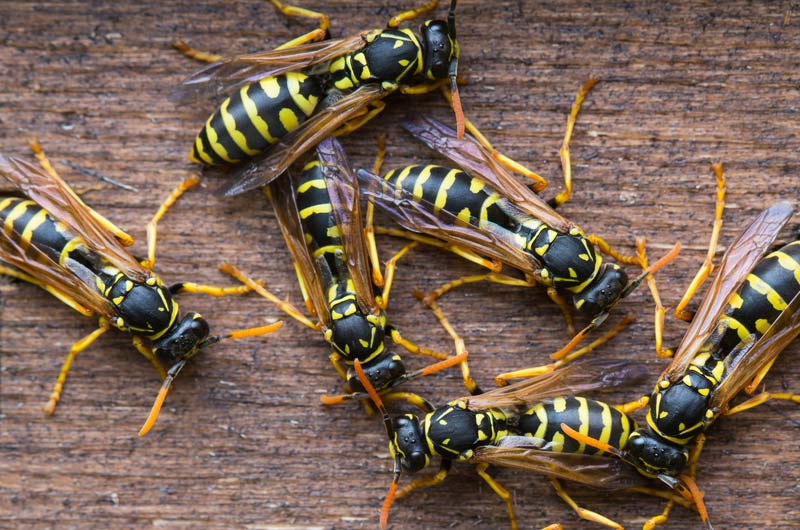Hornet & Wasp Exterminator: Manhattan, Brooklyn, and Queens

If you have a nest that requires immediate attention, contact us Here 347-773-9093.
Hornet Exterminator
Vespa crabro – The European Hornet, 1-1.5 in. long. Black, White, Reddish-brown
Hornet colonies thrive if their queens survive winter. In spring, the queens will seek out food, build new nests, and lay eggs. The rest of them leave the nest and mate. New, fertile queens emerge and the cycle continues as they seek to survive the next winter and build more nests.
European Hornets eat insects and plant nectar. Hornets build paper nests with one hundred to seven hundred workers by mixing their saliva and wood fibers from fences, logs, and old (non-painted) wood buildings. People find hornet nests in attics, trees, porches, and wall voids. Hornets will defend their nests aggressively and deliver painful stings if provoked. But the upside is they’ll keep the insect population under control.
Wasp Exterminator
Scolia dubia & Atanycolus spp, 1 inch or less. Variety of colors.
Some wasps, like the erroneously named Baldfaced Hornet, will build round, gray paper nests on tree branches and inside tree hollows and thick bushes. Most wasps prefer underground nests and employ one hundred to five thousand workers. They eat insects but also hunt for other proteins and sweets. Yellowjackets are the most aggressive. They’ll use their stingers repeatedly to ward off an intruder. Paper wasps will only sting if threatened. Problems arise if they’re nested where humans go, such as in doorways or around fruit trees.
